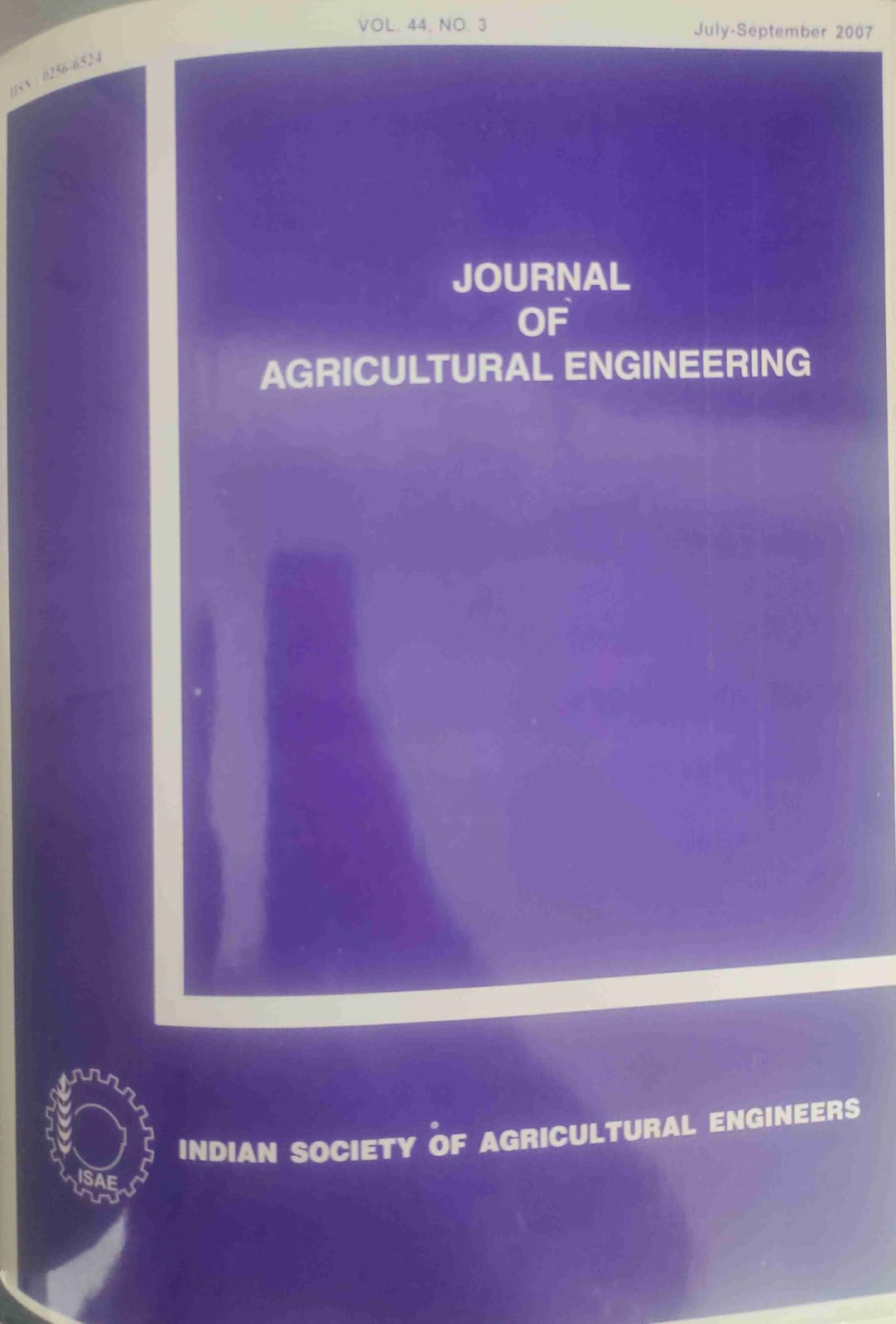Comparative Performance of Different Threshing Mechanisms on Pigeonpea Seed Quality
DOI:
https://doi.org/10.52151/jae2007443.1282Abstract
A study was conducted to compare hammermill, spike tooth and raspbar threshing cylinders at 3 combinations of cylinder speeds (400, 450, 500 rpm) and concave clearances (5, 10, 15 mm) for assessing quality of threshed
pigeonpea seeds. Observations were recorded on the parameters namely, seed damage (%), threshing efficiency (%), standard germination (%) and electrical conductivity ()m mhos-1cm-1seed-1). Maximum seed damage (16.54%) was observed when threshing was done by hammermill cylinder with the cylinder speed of 500 rpm and concave clearance of5 mm. The threshing efficiency decreased (99 to 91 %) with decreasing the cylinder speed from 500 to 400 rpm and increasing the concave clearance from 5 to 15 mm. The minimum seed damage (3.5%) and maximum germination (82%) were found under low cylinder speed (400 rpm) and high concave clearance (15 mm) in raspbar and spike tooth threshing cylinder. The germination was found significantly and negatively associated with seed damage, threshing efficiency and electrical conductivity. The electrical conductivity of seed leachates increased as the cylinder speed increased and concave clearance decreased.
References
Anwar M; Tahir Abdul; Waheed; Amjad Nadeem. 1991. Development and field performance of a Chickpea thresher. AMA, 22(3), 73-78
ISTA. 1999. International rules for seed testing. Seed Sc. and Technol. (Suppl.), 27, 1-335
Jagadish G V; Shambulingappa K G 1984. Relationship between seed damage and germinability in sunflower (Helianthus annuus L.). Seeds and Farms, 10 (6), 25-27
Kamble HG; Panwar J S. 1984. Studies on Machine Crop variables for threshing of Moong (VIgna Radiata (L.) Wilczek). J. Agric. Engng., 21(4), 1-7.
Neeraj; Singh Bachchan. 1988. Performance evaluation of Pigeonpea (Cajanus cqjan) threshing mechanism. J. Agric. Engng., 25 (4), 9-17
RNAM test codes and procedures for farm machinery. 1983. Technical Series No. 12. United Nations Development Programme, Phillipines.
Sharma K D; Devani R S. 1980 Threshing studies on Soybean and Cowpea. AMA, II (I), 65-68,
Singhal 0 P; Thierstein G E. 1987 Development of an Axial - Flow thresher with Multi-Crop potential. AMA, 18 (3), 57-65.
Sinha J P; Pandita V K. 2002 Effect of threshing method on seed damage, germ inability and seedling vigour in Okra. Seed Res., 30 (I), 161-163














